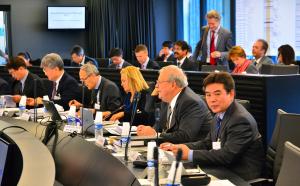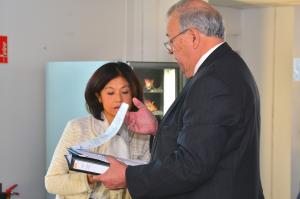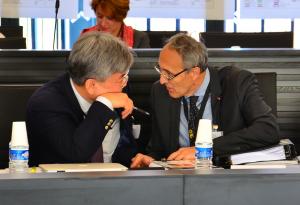Council will review ITER proposals on schedule
Exactly 30 years after the November 1985 Geneva Summit gave government-level impetus to the world's largest collaborative effort in fusion science, the governing body of the ITER Organization—the ITER Council—convened for the seventeenth time. The meeting on 18 and 19 November brought representatives from China, the European Union, India, Japan, Korea, Russia and the United States to the site of the ITER Project in Saint-Paul-lez-Durance, France, where construction activities on the scientific facility have accelerated in recent months.
The updated long-term schedule, and associated budget and staffing resources, will now be the object of an independent review mandated by the Council.
Until the Council completes its analysis, no definitive project schedule can be announced. "Of course we could not expect immediate approval of our proposals related to schedule, budget, and staffing," stressed the Director-General to the press after the meeting. "A fully qualified panel of experts will now look at the proposed schedule to verify the consistency and reliability, and also to see if there are areas that can be improved or accelerated. ITER is a funded through public investment and this level of scrutiny is absolutely to be expected."
The Council plans to complete its review of the updated, resource-loaded long-term schedule and reach agreement on the overall schedule through First Plasma by its next meeting in June 2016.




